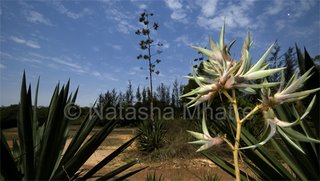 I've had several discussions recently, over rights, over whether a person who has not taken the images but is 'owner' of the property in which an image was taken has any control over how the images might be used.
I've had several discussions recently, over rights, over whether a person who has not taken the images but is 'owner' of the property in which an image was taken has any control over how the images might be used.This is a reading of the laws in the US. I guess India is similar, its hard to tell right now though. Most laws seem to relate to people not really to places, you can photograph in most places and commercially exploit those images. Except off course places where it is expressly forbidden, I suppose defence installations, airports, etc. (I'm personally not even sure that some places that forbid photography can do so legally!) .
But thats not really the tack I'm going to take in this post. Not the legal one, I will eventually find out, but this post takes a different point of view. If these images were paintings instead of photographs, I believe most people wouldn't think even for a minute before saying that the maker of the painting should have every right to use it as he pleased and the owner of the property should have no control whatsoever over the image.
I believe this is so for several reasons, the most important being that we see painting even the most realistic one as being interpretive, not literal. There are other arguments which would relate largely to the time and effort paintings take. And off course the belief is that photography is not.
Yet one Nat Geo photog who was asked what shutter speed he used for a particular picture said, one 6oth of a second and a lifetime. Each photograph is truly a lifetime in the making and is interpretive. There are as many artistic decisions in making a photograph as there are in making a painting. You pick subject, lens, angle, exposure, time of day, arrangement of objects when and if possible, depth of field, film for qualities of colour response and ISO (or if you use digital like me White balance and ISO). These are all 'creative' choices. The same object can be made to look very very different based on these choices, and more importantly from and artistic point of view to signify very very different things, tell different stories. Look at the two images in this post they are images of the same thing, an Agave. (Theres another story behind these pictures as well, one that will embarrass me, so I will not tell it!) Yet the two images are completely different and will be read by most viewers completely differently!
 While the shutter speed of a single exposure is usually within a second, a particular photograph can take as much as days, weeks or even months to make. You know the Nat Geo hit rate for number of exposure vs number of published pictures is about 0.01%; a few hundred thousand pictures every year! With the advent of digital tech its probably even more. Why take me, I've shot seriously for what, two-two and a half years? I have made over 20,000 exposures.
While the shutter speed of a single exposure is usually within a second, a particular photograph can take as much as days, weeks or even months to make. You know the Nat Geo hit rate for number of exposure vs number of published pictures is about 0.01%; a few hundred thousand pictures every year! With the advent of digital tech its probably even more. Why take me, I've shot seriously for what, two-two and a half years? I have made over 20,000 exposures.Think then not only about the time taken to make these exposures, but the time it takes to sort through them and pick the ones you want to use/take further, a process called editing. Then post-processing, dodging, burning, colour correcting, croping, etc. (Something even film photographers did, not just us digi plus photoshoppers as some old timers like to claim. Then it was the darkroom, now its the digital darkroom.)
In the final analysis, a photograph can take as much time as a small oil, a large watercolour, or a medium pastel sketch. Ask me, I've done all of these! And it takes a lifetime to make a good one, to know the good one. And should be considered as independant of the place they were made as you would a painting!
So think again when you think of a photograph as a snapshot....good ones aren't.
No comments:
Post a Comment